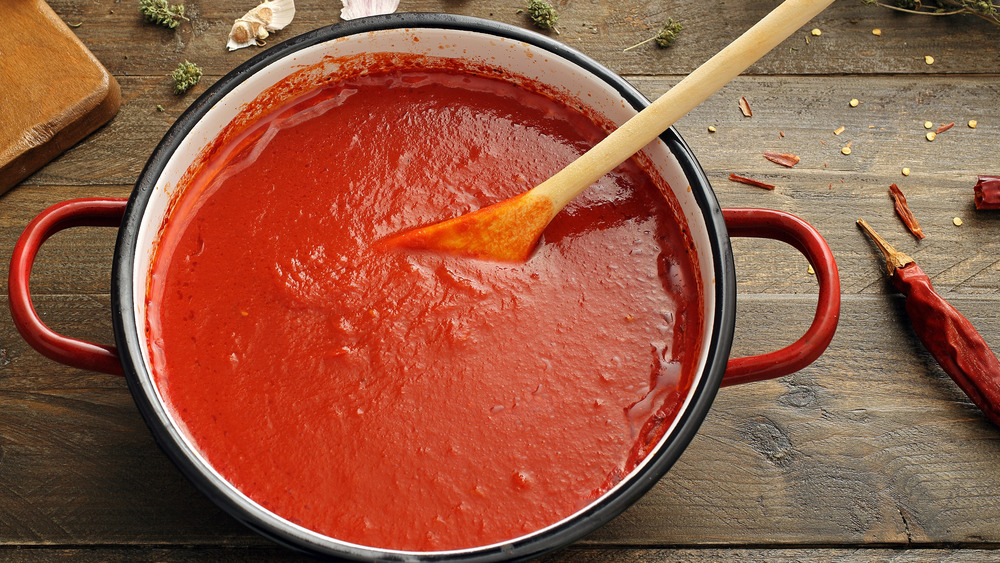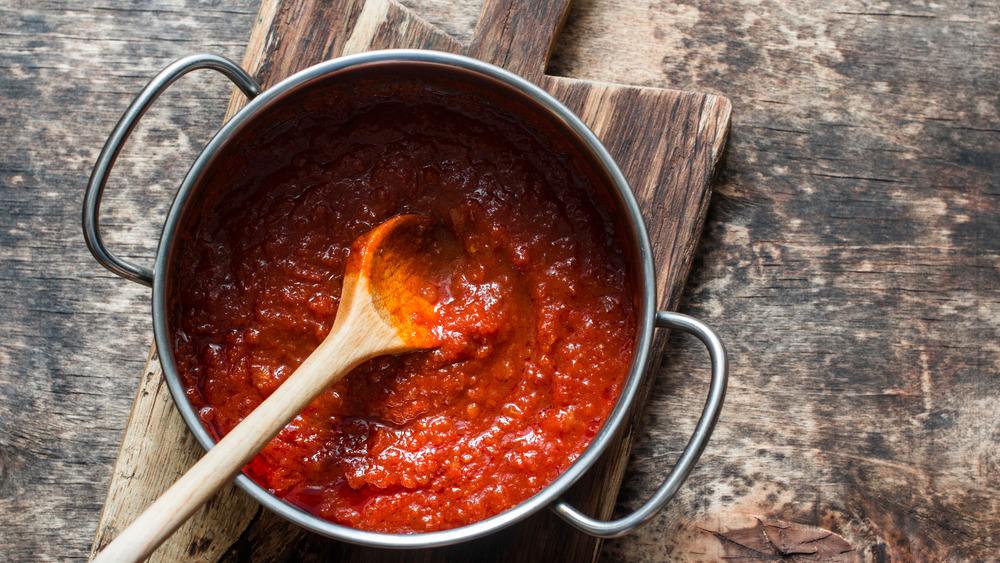This Is Where The Flavor Of Marinara Sauce Comes From
Called marinara, pomodoro, 'red sauce,' and even the oft-debated 'gravy' in certain regions — these names are used interchangeably to describe a wide variety of tomato-based sauces, and there are many subtle differences between a standard tomato sauce and marinara. Marinara sauce is regaled and has a storied history, but it's easy to mix up with other Italian and Italian-American tomato-centric sauces, so we hope this can clarify those subtle variations.
The Daily Meal states that "mariner's sauce originated in Naples," and The New York Times notes that when translated, 'alla marinara' means "of the sailor." There are a slew of tales behind what this name might mean, but the true origins are debated. In The New York Times, Julia Moskin says that "marinara became a catchall term for tomato sauce in this country," and that "true marinara" contains "no onions, no wine, no meatballs, no anchovies, no tomato paste, and no butter," and that it should be finished cooking within 25 minutes — it's not a sauce that should be cooking on the stove all day long. Moskin also speaks with Lidia Bastianich, who includes some additional tips: cook marinara in a skillet, not a saucepan, and use super-fresh olive oil, lightly crushed garlic cloves, basil sprigs, dried oregano, salt, and the highest quality tomatoes. While many recipes swear by San Marzano tomatoes, Taste of Home notes that any variety of plum tomato will do.
What sets Marinara apart from other tomato sauces?
In addition, most marinara sauces also contain red pepper flakes or some sort of chili to add a touch of heat — but if you're sensitive to heat, they can certainly be omitted. Bastianich further differentiates between the sauces on her website, stating that "marinara is a quick sauce," whereas tomato sauce "is a more complex affair," that even sometimes contains meat. She categorizes the flavor of marinara as "fresh," while traditional tomato/pomodoro sauce is "sweeter and more complex." Cooked pasta should also always be tossed in the pan with the sauce — the sauce should not be "heaped on top." Any noodle is fine to serve with marinara, from the basics like spaghetti and ziti, to more outlandish shapes. Lastly, it's noted that marinara is not traditionally served with cheese (!), which is certainly a bummer for all of the cheese fanatics out there.
At its basis, marinara is a perfect 'weeknight meal,' in that it should take no more than 25 minutes, the prep work is minimal, and the pasta also cooks during that time. While marinara traditionally adorns pasta, there are obviously a multitude of other uses for it, from pizza to shakshuka. Although the minute specifics differentiating marinara sauce from other 'red sauces' are myriad, it's impossible to go wrong with any combination of olive oil, garlic, tomato, salt, and a mix of herbs, no matter how it's prepared and served.

